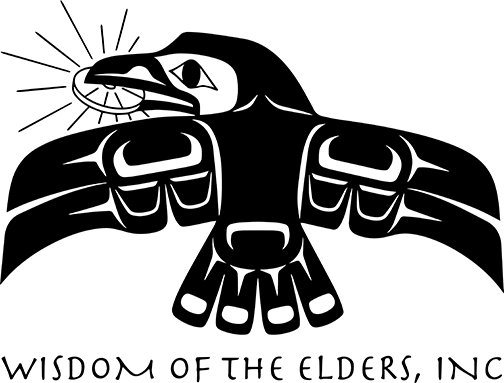Connie Graves
with Bruce Crespin
Arlie Neskahi: In any culture, art may be described as the intersection of materials, knowledge and inspiration. The materials of the traditional basket maker are often easy to find. Inspiration comes to a select few. And, knowledge — obtained over generations of experimentation — must be learned. On today’s Artists Circle, we meet Grand Ronde basket maker Connie Graves, whose life illustrates these three principles of art. Bruce Crespin has more. Bruce Crespin: Connie Graves doesn’t lack for inspiration. An Umpqua / Kalapuya Native, Connie can’t recall a time when she wasn’t inspired.
Connie Graves: My mother will tell you I was a nine-year-old who could sit for five hours on the living room floor making, you know, fake fingernails from scotch tape. I spent one whole summer crushing clay and mixing it with sand and making pottery down by the river at our house. I mean, I couldn’t come to the dinner table because the flour I was making wasn’t finished. So basket weaving’s just an extension of that.
Crespin: Connie started learning the art of basket weaving some twenty-five years ago, but when she started collecting her own materials, weaving became essential to her life.
Graves: The weaving is pretty much weaving, whether you’re from China or Appalachian Mountains or a Native Northwesterner. There’s varieties of weaving. What makes it indigenous to you is the material that you use, and that’s what I was looking for. But I do have tons and tons of juncus and cedar and willow sticks hanging up in the basement drying at any given time.
Crespin: Connie learned how and where to gather willow, juncas and other materials for basket weaving from Pegg Matheson, reknown expert on traditional Indian baskets.
Graves: I can’t tell you how amazing she is. She can take a basket and look at it and tell you what it’s made of and, and where, what region it came from and sometimes even the era that it was made. There’s maybe twenty or fifty different kinds of willows just in her own yard that she grows so that you can gather and, you know, learn to make baskets from.
Crespin: Pegg showed Connie and other students that traditional materials can be readily found.
Graves: The juncus when I first found out about juncus I think, I say it was like getting my first engagement diamond. I almost wrecked my car because you see it. It’s everywhere. It’s, it’s in every ditch. It’s in every field. It does take a year to dry and season. After six months it appears to be dry. And you’ll soak it and use it and it’s, it’s just not very workable. And if you put it away and you just leave it alone for that year, it’s just amazing what a difference the six months will make. And the root is another thing you, I dig it from underneath a live tree. And when I’m down there on my hands and knees digging in the dirt and gross, climbing up the hillside, the prices of the baskets go up accordingly. But once I dig it, I bring it home. And then I steam it and I peel it and then you split it before you would use it. So, sometimes it can take two days working four or five hours to just prepare the materials to make a basket that’s about eight or ten inches.
Crespin: In 1954 the federal government terminated the Grand Ronde’s tribal status. It would not be restored for some three decades. For many of the Grand Ronde, the process of relearning traditional knowledge and restoring tribal culture continues on a daily basis.
Graves: In my grandma’s generation, the Hudson sisters. They wove baskets but iIm forty-eight years old and I don’t remember anybody that actually, you know, I ever saw making them. My mother does. She remembers an aunt of hers who made baskets. We always laughed because she said didn’t think her aunt was so clever. She just thought she was really messy. There was sticks and grass and all kinds of things all over her house all the time. And I think I’m afraid that’s what she thinks of me too.
Crespin: Connie creates copies of baskets used by her ancestors. One of the most common is called a burden basket, used in gathering food. 
Graves: A burden basket is a cone shaped basket that would hang from a single handle. It was generally made of juncus, which is a rush that you collect during the summer, and it needs to season for at least a year. Then the handle didn’t actually went across your forehead and the basket hung down your back. And the point of the cone shape was so that your hands were free and you could throw them behind you, and it went falling down into this nice cone basket. It didn’t come bouncing back up.
Crespin: Connie also creates new basketry forms based on traditional weaving techniques. Her life has become a virtual intersection of tribal traditions, where the knowledge she has learned about indigenous materials and making traditional baskets now matches her unbounded inspiration to weave.
Graves: I find it easier to get kids enthused about it if they can make themselves a coin purse versus a burden basket. They’re not going to use a burden basket, but boy, they’d like to have a coin purse or maybe a picture frame. And so I take the traditional methods and turn them into things that I can use today. Like a mad scientist I am sometimes.
Crespin: For Wisdom of the Elders, I’m Bruce Crespin.
Connie Graves photo courtesy of the Oregon Historical Society
